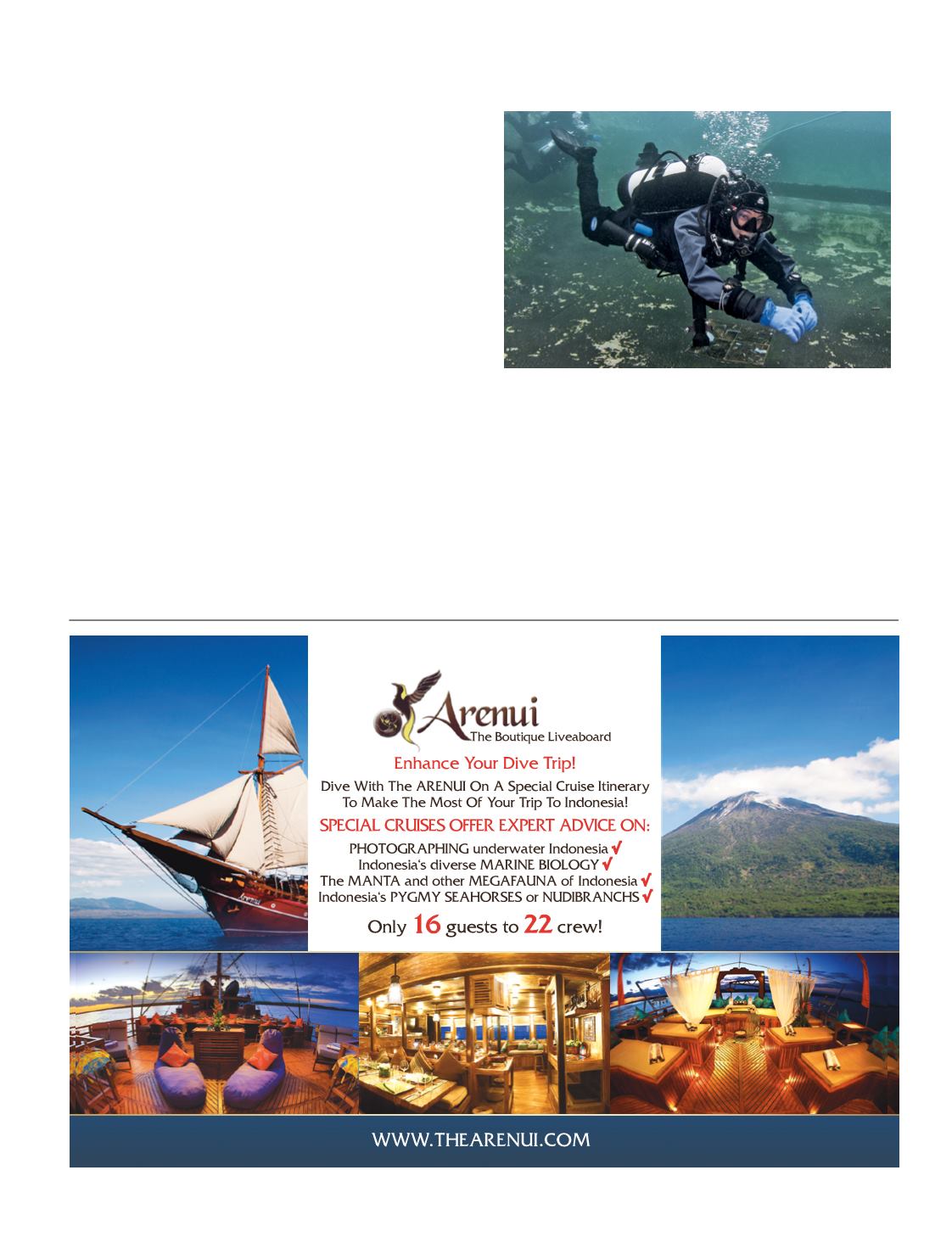
|
45
many divers have yet to get the message. Pick up a dive
magazine or visit a popular dive site and you will see divers
struggling through the water in “seahorse” position or a
circle of divers kneeling on the seafloor to do drills. But the
message is spreading. Recently the Professional Association of
Diving Instructors (PADI), the world’s largest training agency,
announced that it would begin emphasizing trim and buoyancy
in its revised open-water training program beginning in 2014.
Good buoyancy and trim means being able to descend
slowly in a horizontal position and then stopping at will
without touching the seafloor or sculling with the hands. From
there, the diver should be able to start swimming without
breaking position or float motionless for several minutes in a
horizontal position without rising or sinking. Divers should be
able to clear their masks or share air with a dive buddy while
maintaining good trim and without changing depth by more
than a few feet. They should also be able to turn to the left or
the right or even move backward using only their legs.
Putting It All Together
Taking a training course is probably the best way to begin to
perfect your buoyancy and trim. Most of the available courses
offer a mixture of lecture, pool practice and open-water dives.
One training method that can help you master these skills
is the use of performance metrics. For example, specify a
number of feet you may vary from your target depth during
a training exercise or quantify in degrees how far you wish to
permit yourself to deviate from horizontal (e.g., no more than
20° or 30°). Metrics offer a precise way to track and measure
performance instead of relying on qualitative judgment alone.
A second method is using video to record your (or your
students’) training exercises to get accurate feedback about
progress. Video enables you to see what you’re doing right and
what needs work. Underwater mirrors, which are sometimes
used in pool practice, are also excellent feedback tools.
TOM BOYD


